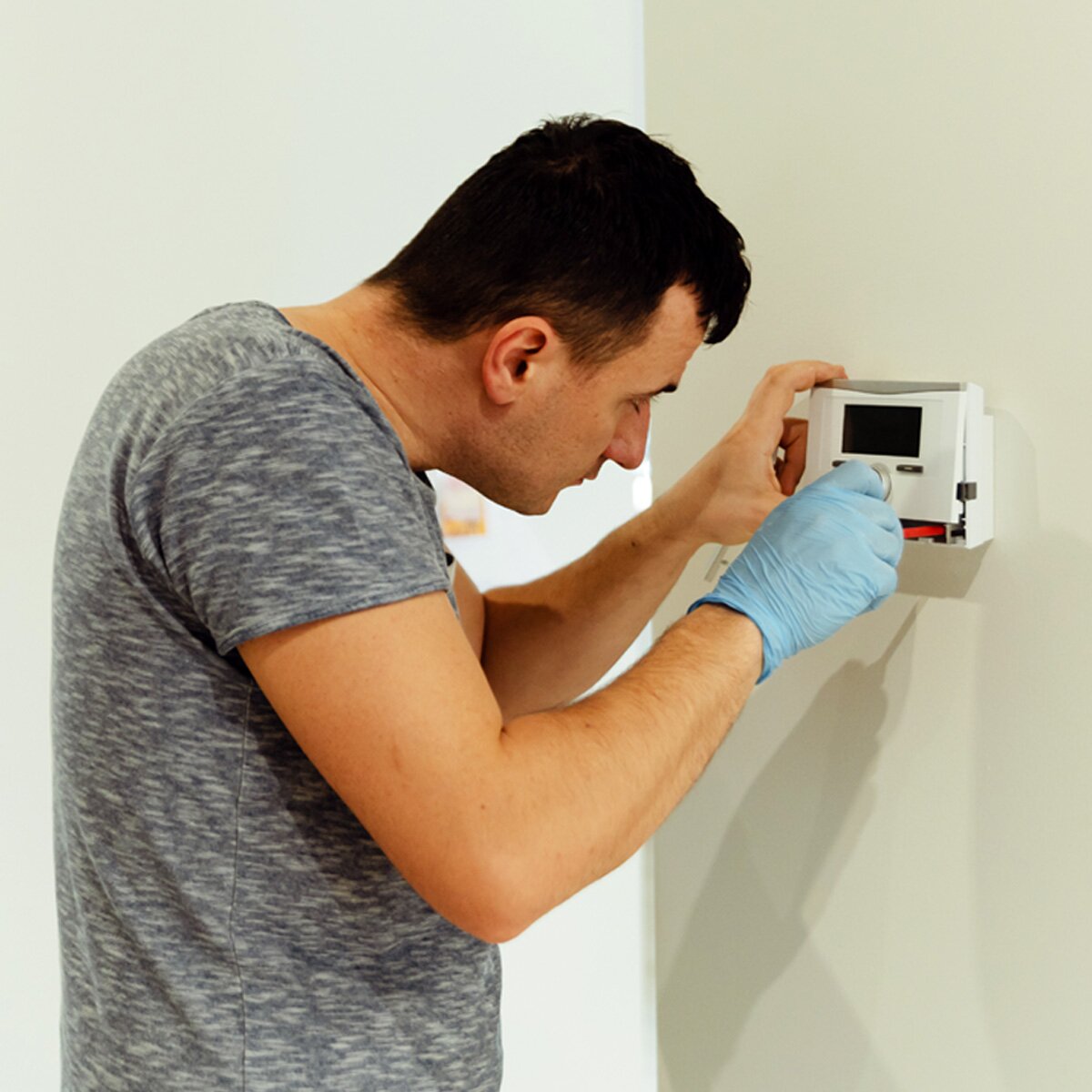Using Smart and Programmable Thermostats
2/28/2025

On average, smart thermostats can save you between 10% and 15% each year on your heating and cooling, and programmable thermostats save users about 10%.
One of the energy tips we give to customers regularly is to consider switching to a smart or programmable thermostat. They’re both great at saving time and money, so we thought we’d dive into the topic a little deeper this week. Here’s more about using smart and programmable thermostats.
Which is better, smart or programmable?
This all comes down to your needs and what you’re willing to spend. Smart thermostats are praised for their ability to learn your habits over time, automatically making small adjustments at different times of day—and year—to help you cut energy use and save money. But that’s not all. Most allow you to control them remotely from anywhere with a mobile phone, laptop, tablet or desktop computer, and they tend to integrate well with other smart devices and virtual assistants like Siri, Alexa and Google Assistant. Some even help you monitor air quality or provide detailed energy use reports so you can gain a better understanding of your usage. On average, smart thermostats cost between $80 and $300.
Programmable thermostats are simpler and typically only offer you the ability to schedule your heating and cooling temperatures based on your daily routines—still a money saver over time if you’re forgetful about adjusting your thermostat for different times of day. They don’t connect to the internet like smart thermostats, so you won’t be able to get updates or control them remotely. But they’re usually less expensive to purchase, ranging between $20 to $100.
Can I install my own thermostat?
In most residential scenarios, the answer is yes, even if you’re only moderately handy. And this is true whether you’re a homeowner or a renter, though it’s smart for renters to check with their landlord first. He or she may object or require you to install the original thermostat when you move out—find out and get it in writing!
Once you’re ready to commit to a thermostat upgrade, you’ll need to identify your HVAC type, as only low voltage (24V) systems are compatible with smart and programmable thermostats. Higher voltage systems—like those found in electric baseboard heating—are typically a no-go.
If you’re planning on a smart thermostat upgrade, you’ll also want to check that your current thermostat has a C-wire, which provides the electricity needed to power a smart thermostat. You can check by shutting off power to your HVAC (at the breaker box), removing the face panel from your thermostat and looking for a wire that connects to a terminal labeled “C.” If you don’t see this, you might not have one or it could be coiled up within the wall behind the thermostat—try removing it from the wall to see if one’s visible. With no C-wire, you’ll have to either abandon your dreams of a smart thermostat for one that’s just programmable or call in a professional.
NOTE: Many manufacturers list HVAC models online that their thermostats are compatible with, so this is a good place to start if you already have a particular thermostat brand in mind.
How do I install my new thermostat?
Once you’ve determined what your HVAC system is compatible with, installing your new thermostat is relatively easy. To get started, you’ll need:
- Screwdrivers, flathead and Phillips—one of both types may be required
- Wire Strippers—to strip the ends off any wires that need to be adjusted
- Needle-Nose Pliers—to help if you need to reshape the end of a wire
- Masking tape or Wire Labels—to keep wires labeled properly once disconnected
- Drill and Drill Bits—in case you need to make new mounting holes in the wall
Once you’ve gathered the necessary tools and items, follow these steps:
- Turn off the power to your HVAC system at the breaker box.
- Remove the old thermostat and base plate from the wall.
- Attach the new thermostat’s base plate to the wall.
- Connect the wires you’ve labeled to the corresponding terminals on your new thermostat.
- Attach your new thermostat, snapping it onto the base plate.
- Turn your power back on and follow the setup instructions included with your new thermostat—smart thermostats will need to be configured to connect to Wi-Fi.
How do I use my new thermostat?
Below, you’ll see some general steps to follow when using your new thermostat, but be sure to read the manufacturer’s instructions. Each will vary by brand and type.
Programmable Thermostat Use:
- Set the date and time, as your programmable thermostat won’t work accurately otherwise.
- Set the temperatures you want your HVAC system to run at for different times of day and days of the week.
- Use override features to temporarily change temperatures and the vacation mode to keep consistent temperatures when you’re gone for extended periods.
Smart Thermostat Use:
- Follow the on-screen prompts to connect to your home Wi-Fi.
- Install your thermostat’s app on your phone, tablet or computer—this will be your main method of controlling your thermostat.
- Open your app and create an account. Then follow the prompts to pair your thermostat with your account.
- Set your temperature preferences and daily schedule
- Explore the various features your new thermostat offers, such as geofencing, energy use reports and voice control.
- Use your app to monitor and make adjustments over time.
We hope you found this overview of smart and programmable thermostats helpful. Thanks for reading along.
 Help
Help Giving Back
Giving Back My Account
My Account Sign Up
Sign Up











